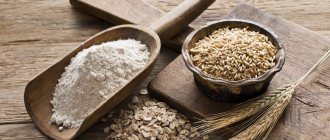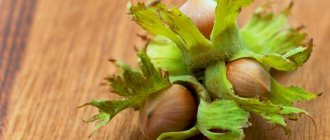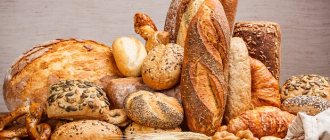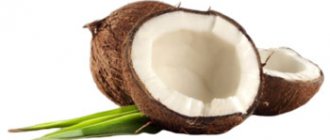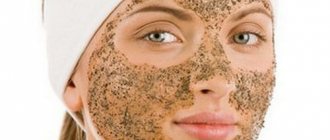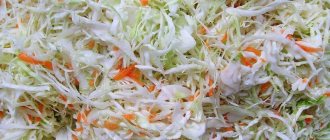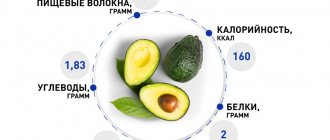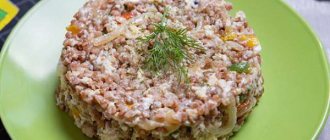May 29, 2012
Along with sugar, bread is often blamed for the obesity epidemic. Should you give up bread?
Along with sugar, bread is often blamed for the obesity epidemic. Indeed, wheat bread contains a large number of calories and few nutrients. Does this mean that you should give up bread altogether? Are there healthy baked goods? Manufacturers vied with each other to lure buyers with loud names: “Healthy”, “Grain”, “Dietary”. The more information on a bread package, the more confused the consumer becomes. Learning to choose the right bread.
Why is white bread dangerous?
White bread, cakes and sweet cookies provoke the pancreas to increase the release of insulin. Find out more about trigger foods.
A little theory
Whole grains - wheat, rye and any other - consist of three main components: the grain shell or bran, the germ and the endosperm. During processing, the bran and germ are removed - as a result, only the endosperm remains, rich in easily digestible “fast” carbohydrates. Fiber, essential fatty acids and other beneficial substances are lost
. The endosperm of wheat grain produces the very fine white flour that is used to produce white loaves and baked goods.
What is choux paste?
The more optimized and automated the production of choux bread is, the more opportunities producers have for experimentation. First of all, this concerns the development of new varieties and original flavor or color combinations. This product is based on classic sourdough, rye, wheat or combined flour, rye malt that has undergone a fermentation process and a number of other additional components. Particularly noteworthy is the fact that different types of flour can be combined with each other in different proportions, thereby creating fundamentally new recipes. The composition of custard bread with this approach can differ quite greatly from the usual generally accepted standard.
This version of the dough base is ideal for those who do not have the ability to make their own brew and still end up with a truly high-quality food product that will have excellent taste and aroma properties. It is precisely due to their simplicity that custard pastes are becoming increasingly widespread, since with their help it is enough to simply mix flour, water, yeast with a ready-made base in order to bake excellent varieties of popular bread with minimal time and money.
At this stage, the manufacturer offers its customers four basic products at once:
- "Belarusian light";
- "Rizhskaya dark";
- "Multigrain";
- "Maisovaya".
Each of this list of custard pastes is intended for the production of specific varieties, and the technology for producing custard bread using them is much more efficient and increased productivity due to less time spent on the production of the base.
Despite the fact that the manufacturer presents only 4 bases, each of them allows you to bake several different types of bread at once.
Whole wheat bread
Real whole grain bread is very healthy. It contains approximately three grams of fiber in each slice. Choosing it is quite simple - in the list of ingredients, the item “whole grain” should be in first place
.
This suggests that the flour was not purified to make bread, and all the useful components remained in it. Please note
: if the bread contains “natural wheat” or “natural rye”, this does not mean that the bread is whole grain.
Most often, such a product is made from only one type of flour, without adding other grains. The label “natural” does not guarantee that the grain has not been cleared of its shells and germ. Regular flour
also hide
Culinary use
How to choose
Here are some tips:
- Choose a loaf that is undamaged and has a beautiful natural color.
- The burnt crust contains carcinogens; it is better to avoid such a loaf.
- The presence of mold or an unpleasant odor are good reasons to refrain from purchasing.
- Pay attention to the production date and composition (different E are not acceptable).
A high-quality product is stored for 3-4 days, after which it begins to become moldy. If this does not happen, you should not buy such products again, they contain a lot of chemicals.
How to use
It is better to eat potatoes and meat without bread, but with broths and seafood, rye slices will come in handy. It is better to eat the product in the first half of the day, 1-2 pieces per day is enough. It is important to chew the product thoroughly. You should avoid fatty treats (sandwich with mayonnaise, butter, sausage).
Important! Fresh bread is inferior in beneficial properties to yesterday's bread.
How to store
For storage, it is better to use special bread bins, after cutting the loaf into slices and drying them. Once a week, the bread bin should be washed and crumbs removed.
Advice! If you place several slices of apple in the bread bin, the product will go stale much more slowly.
Bread with seeds and nuts
A loaf of bread sprinkled generously with seeds or grains may seem like a healthier option. However, do not forget that such ingredients add calories to the finished product. For example, just ten grams of sunflower seeds, evenly distributed in a “healthy” bun, increases its calorie content by almost 60 kcal. In addition, manufacturers often disguise bread
made from ordinary white flour with seeds, nuts, dried fruits and vegetable additives, passing it off as a dietary product.
Be sure to check how many calories are in the seeded muffin and look for the “whole grain” item in the ingredient list. If it is not in first place, put the packaging aside: in front of you is bread made from regular flour, only higher in calories
.
Product Appearance
The origin of this particular product is controversial. It is known for certain that for a long time in Rus' they did not mix wheat and rye flour. In general, white bread was considered primarily a product for the wealthy class, and products made from rye flour were considered food for ordinary people.
Black bread has been mentioned since the 16th century, but only in the 20th century did ideas about the benefits of rye bread change dramatically. The gray product began to be consumed much more due to its lower calorie content and the variety of microelements and vitamins.
Rye, for making black and later gray bread, was brought to Russian lands from the Caucasus. The rye plant turned out to be much more pliable than wheat, so it began to be widely used for crops. Rye was especially given tribute during times of poor wheat harvest. And even after breeders developed a more resistant variety of wheat in the 19th century, people did not give up rye flour, having tasted its taste and unusual sourness.
Over time, the idea arose to create a bread based on two types of flour in order to produce a fairly delicate texture with notes of a rye mixture and obtain more beneficial properties than white bread.
Kinds
In today's baking business, you can find various types of gray bread, which differ not only in name, but also in composition and principle of preparation. The most popular are:
- Ukrainian. The mass fraction of rye can reach 80%, and wheat - only 20%. The product may have a fairly dense thick crust and elastic, porous flesh;
- ordinary rye-wheat flour consists of 55% rye flour and 45% wheat flour;
- the recipe for the capital consists of equal proportions of flour mixtures, and the distinguishing feature is sugar;
- Ukrainian new contains 40% second grade wheat flour;
- regular wheat-rye is prepared on the basis of 30% rye flour;
- Darnitsky consists of 60% 1st grade peeled rye flour.
In addition to popular types, you can find such a product with all kinds of additives in the form of vegetables, dried fruits, nuts, seeds, spices, bran or herbs. Gray bread is also baked in various variations; it can be seen in the form of a brick, round, oval, hearth.
Differences
The main differences between such bread and white wheat bread can be considered a darker or gray shade, which can be seen even with the naked eye. The color of gray bread directly depends on the percentage of rye flour.
The taste of gray bread is neutral, in contrast to the sweetish white loaf or the sourish black rye product. The structure of rye-wheat also has a golden mean, because it combines the dryish consistency of white baked goods and the moist, fatty pulp of pure rye bread. The moisture content of a wheat-rye product is approximately 50%, but can fluctuate in any direction, taking into account the different ratios of flour mixtures in recipes.
Also, a distinctive feature of a gray loaf is its nutritional value when compared with a white loaf. This is due to the fact that the composition of rye flour is more saturated with vitamins and microelements. But, since not all categories of people can consume pure black or white bread for various reasons, the gray product is equally capable of providing the human body with all the necessary substances and being absorbed more quickly.
Application
Bread made from gray flour has found its use in many dishes. What can you make from gray bread? Lots of different delicious treats! Due to the neutral taste of the bread, it is often used as the basis for sandwiches or sandwiches with meat, vegetables, garlic or cheese products. Gray can be found as croutons or toast as a dessert type of snack with fruit filling, jam, preserves or other sweet mass. Don't forget about more unusual recipes in which you can use simple gray bread: savory bread pudding, peasant Arabic salad, French bread soup, Italian appetizer made from bread crumbs, as well as various desserts based on crumbs.
Don’t be afraid to spoil the cutlets by adding gray bread instead of white bread, because you won’t lose in taste or quality of preparation.
Fats and other sources of additional calories
The composition of bakery products often includes fats - vegetable or animal. To avoid excess fat, try to avoid buying breads that contain hydrogenated
vegetable oils, partially hydrogenated oils, margarine or shortening. Ingredients that add calories also include molasses, sugar syrup and caramel. They are often added to “healthy” bread with nuts or dried fruits. Study the composition carefully!
What is GI?
For 30 years now, the term “glycemic index” has been used in nutritional science. Read about how it is measured and why.
Description
Brown bread is not only one of the most sought-after and popular products, but is also considered a fairly valuable element of nutrition in the daily diet. World cuisine has a huge number of different recipes for preparing delicious, aromatic gray bread.
Modern bread production provides a wide selection of both traditional baked goods and the presence of various additives in the product in the form of various cereals, herbs, seeds and other things.
Salt
Salt is added to almost any baked goods - not only for taste, but also to control the activity of yeast in the dough. According to various sources, just one slice of whole grain bread contains about 200 mg of sodium. At first glance, this is not much, but the recommended daily dose is about 1800 mg of this substance, and the usual diet is not limited to one bun. The least salt is in the bread in which this ingredient is in the very last place - and certainly after flour and water.
Trans fats, pesticides, GMOs – myth or reality?
Myth. No GMOs were detected, this was shown by a screening method for qualitative determination of regulatory sequences in the genome of GM plants.
No pesticides were detected, even in trace amounts. We would like to add that when studying the bread MPC for this indicator, an extensive analysis was carried out - on 140 common pesticides that can be used to treat cereals during growth and ripening.
The content of trans fats (and at the same time the peroxide value of fat) was not studied for one simple reason: bread has very little fat (in our samples - from 1 to 12%). And, accordingly, it is impossible to extract enough fat to check for its peroxide value (indicating the degree of rancidity) and for the presence of trans fats.
